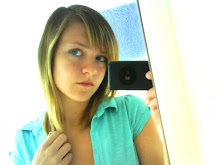Claude Levi-Strauss
Claude Levi-Strauss believed that stories should reflect the values, beliefs and myths of a culture, they should do this unconsciously without making it too obvious. Also there are oppositions which are usually shown in the characters and storyline.
Vladimir Propp
In Vladimir Propp's research he found that in Russian folktale the stories consisted of the following functions:
1.A member of a family leaves home (the hero is introduced);
2.An interdiction is addressed to the hero ('don't go there', 'don't do this');
3.The interdiction is violated (villain enters the tale);
4.The villain makes an attempt at reconnaissance (either villain tries to find the children/jewels etc; or intended victim questions the villain);
5.The villain gains information about the victim;
6.The villain attempts to deceive the victim to take possession of victim or victim's belongings (trickery; villain disguised, tries to win confidence of victim);
7.Victim taken in by deception, unwittingly helping the enemy;
8.Villain causes harm/injury to family member (by abduction, theft of magical agent, spoiling crops, plunders in other forms, causes a disappearance, expels someone, casts spell on someone, substitutes child etc, comits murder, imprisons/detains someone, threatens forced marriage, provides nightly torments); Alternatively, a member of family lacks something or desires something (magical potion etc);
9.Misfortune or lack is made known, (hero is dispatched, hears call for help etc/ alternative is that victimized hero is sent away, freed from imprisonment);
10.Seeker agrees to, or decides upon counter-action;
11.Hero leaves home;
12.Hero is tested, interrogated, attacked etc, preparing the way for his/her receiving magical agent or helper (donor);
13.Hero reacts to actions of future donor (withstands/fails the test, frees captive, reconciles disputants, performs service, uses adversary's powers against him);
14.Hero acquires use of a magical agent (directly transferred, located, purchased, prepared, spontaneously appears, eaten/drunk, help offered by other characters);
15.Hero is transferred, delivered or led to whereabouts of an object of the search;
16.Hero and villain join in direct combat;
17.Hero is branded (wounded/marked, receives ring or scarf);
18.Villain is defeated (killed in combat, defeated in contest, killed while asleep, banished);
19.Initial misfortune or lack is resolved (object of search distributed, spell broken, slain person revivied, captive freed);
20.Hero returns;
21.Hero is pursued (pursuer tries to kill, eat, undermine the hero);
22.Hero is rescued from pursuit (obstacles delay pursuer, hero hides or is hidden, hero transforms unrecognisably, hero saved from attempt on his/her life);
23.Hero unrecognized, arrives home or in another country;
24.False hero presents unfounded claims;
25.Difficult task proposed to the hero (trial by ordeal, riddles, test of strength/endurance, other tasks);
26.Task is resolved;
27.Hero is recognized (by mark, brand, or thing given to him/her);
28.False hero or villain is exposed;
29.Hero is given a new appearance (is made whole, handsome, new garments etc);
30.Villain is punished;
31.Hero marries and ascends the throne (is rewarded/promoted).
He also concluded from his findings that the were 7 main character types which were:
1.The villain — struggles against the hero.
2.The donor — prepares the hero or gives the hero some magical object.
3.The (magical) helper — helps the hero in the quest.
4.The princess and her father — gives the task to the hero, identifies the false hero, marries the hero, often sought for during the narrative. Propp noted that functionally, the princess and the father can not be clearly distinguished.
5.The dispatcher — character who makes the lack known and sends the hero off.
6.The hero or victim/seeker hero — reacts to the donor, weds the princess.
7.False hero/anti-hero/usurper — takes credit for the hero’s actions or tries to marry the princess.
Syd Field
Syd Field believed that films should follow a three act structure of a beginning middle and the end. Approxamitly 30 mins of the film gives the audience the 'setup' information before the protagonist experiences a 'turning point' and they find a goal that they must achieve (the beginning). About half of the film is taken up by the protagonist trying to achieve the goal and overcome any obsticles which may get in the way, the is called the 'Confrontation' period or 'Midpoint'. Sometimes the protagonist suffers a set back and it looks like he won't achieve his goal. The final quarter of the film the protagonist goes through the final epic struggle to achieve his/her goal (or not achieve it) and there is an aftermath to their struggle as well.
Tzvetan Todorov
Tzvetan Todorov based his stories on supernatural happenings in the real world and we have to decide if the event was an illusion or whether it had really taken place.
Subscribe to:
Post Comments (Atom)

No comments:
Post a Comment